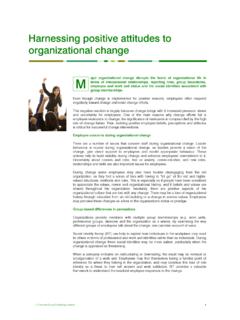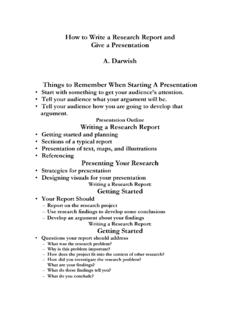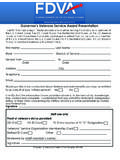Transcription of Tips for Preparing a Strategic-Analysis Presentation
1 MHR 410 1 2011-14 Tips for Preparing a Strategic-Analysis Presentation Purpose The purpose of a Strategic-Analysis Presentation is to recommend a direction and strategy for the company, as well as objectives, programs, and contingencies for the next year (short run) and three years hence (long run). Organization The best and most logical format for the Presentation is one where each part builds on what preceded it. The sequence basically covers an overview of the company first, followed by external analysis , company analysis (lead off with financials and omit opportunities from the SWOT analysis because they invariably appear in the strategic issues), strategic issues, bundles, choice, and recommendations.
2 A suggested number of slides to allocate to each part is shown in the table. Topic Approx. Number of Slides Case Presentation End-of-Quarter Real-Company Presentation Length of Presentation 20 min. 30 min. Total number of slides (including title and end slides) 30-39 33-46 Title slide 1 1 Overview (add history and background only for real company) 1 3-5 Industry analysis (1 slide summary, 1 Porter s, 3 IA-CS-GE) 5 5-6 Competitive analysis (more detailed info on key competitors) 1-3 2-4 Market analysis 1 1-2 Environmental trends 1 1 Financial charts and financial conclusion 6-8 6-8 Strengths 1 1 Weaknesses 1-2
3 1-2 Threats 1 1 Core-competence analysis 1 1 Key strategic issues 1-3 1-3 Announcement of how many bundles and their labels 1 1 strategic -alternative bundles (use one slide for each one) 2-4 2-4 Criteria matrix (use this to argue for your chosen bundle) 1 1 Short-run recommendations 2 2 Long-run recommendations 2 2 Ending slide ( , Any Questions?)
4 1 1 MHR 410 2 2011-14 Text Slides My tips here take the form of suggested do s and don ts. Do s Don ts Use capital letters for the first word of a bullet and proper nouns (but nowhere else) Use font sizes smaller than 18 pt if you want people to read text from the back of the room Keep each bullet as short as possible, and resist the temptation to make it a complete sentence (thus tempting you to read verbatim from the slide) Use colons at the end of titles or headings, ever Use subordinate ( demoted )
5 Bullets for supporting points rather than a semicolon or period in the middle of the bullet Use all upper-case titles or text, ever Limit the number of bullets per slide to seven; if you need more, use a second slide or split the one you re working on into two columns (you ll fit in more information) Import charts, tables, or figures from SAMtw because they are impossible to read. Instead, create them in PowerPoint Use a diagram, chart, photo, or table instead of text wherever you can it usually conveys more information End a bullet or title with a period, ever; the only acceptable punctuation there is a question mark Be consistent in the font size and style of your titles Face the screen and read your slides, ever Always elaborate, paraphrase, or provide complementary information to what you put on a slide (leave the reading to us) Minimize reading from your notes.
6 If you must, look up frequently at your audience, and try to make eye-contact with someone Always use high-contrast colors (white or yellow text on a dark-color background, or black text on a white or light-color background); avoid a background that is a mixture of light and dark shades Use double titles ( , SWOT analysis followed by Strengths, or External analysis followed by Competitive analysis ; use the title that most closely relates to the content of the slide) Financial Slides Use charts to show historical financial data. Since year-to-year data are discrete, use bar charts, not graphs. Charts are infinitely better visually than tables, so never show financial data using tables.
7 Also, be careful when showing more than one variable on a chart do so only if the scale for each variable is similar. For example, never show revenues and NIAT in one chart the two scales are very different. However, showing some ratios together that are in the same percentage range would work. Choose to show a financial chart for a reason. First, showing it should eventually support your financial conclusion. Secondly, make at least one key point about the slide, rather than tell the audience the height of every bar in the chart in turn. Either comment on the reason for a sudden drop or gain, the percentage change in the most recent year, or the average annual rate of growth or decline, as appropriate, in the variable in question.
8 Don t say that revenues are rising (we can see that), or that they dipped in 1998 and rose after that (we can also see that). Give us some explanation or complementary data. Tell us what it all means. MHR 410 3 2011-14 Construct a financial chart with care. The y-axis scale should always start at (or include) zero. Enter the data in question in appropriate units, , if they are in $ billions ($B), don t enter them in millions with units of $ thousands, just because that is how they appeared in the income statement; enter them in $B. That way, it will eliminate the zeros on the y-axis. And please, don t use a scale with any places of decimals!
9 If the x-axis is in years, you don t need to label it years. Similarly, if the chart is about revenues, is titled Revenues, you don t need an extra y-axis label Revenues. When you show only one variable in the chart, , revenues, don t show a legend; this is useful only when showing two or more variables on the same chart, , revenues by geographic region, or by product line. Remember to show the units of the y-axis, , $M, either next to the y-axis or, preferably, right after the title as part of the title. The title of the slide should generally be the variable or variables shown in the chart, , NIAT, not Financial analysis .
10 No need to use the name of the company in the title. Finally, make sure the years in the x-axis increase from left to right. Two charts follow one with many mistakes (an actual example taken from a draft student Presentation ) and the same one corrected. Revenues ($M)010020030040050060070019881989199019 911992 Your financial conclusion is critical. Title the slide Financial Conclusion, and put it after your set of financial charts. The first line after the title should be the actual conclusion in bold, slightly larger font size, italics, and in a high-contrast color, all to make it stand out (but not bulleted).








